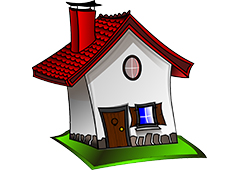This could finally be the year that production of single-family homes outpaces apartments in the U.S., according to the National Association of Home Builders’ 2016 Spring Construction Forecast.
On the downside, factors that stand to hinder a full rebound include a shortage of build-able lots and labor, along with limited access to acquisition, construction and development loans.
“Builders remain cautiously optimistic about market conditions,” says Robert Dietz, NAHB’s chief economist. “2016 should be the first year since the Great Recession in which the growth rate for single-family production exceeds that of multifamily. And we see single-family growth accelerating in 2017 as the supply side chain mends and we can expand production.”
Steady job growth mixed with affordable home prices, low mortgage rates and pent-up demand have bolstered consumer confidence, with the single-family housing market expected to make a recovery during the next year and into 2017.
NAHB forecasters predict that single-family production will see an increase of 14 percent this year (to 812,000 units), and then rise another 19 percent in 2017 (to 964,000 units).
Referring to the 2000-2003 period as a healthy benchmark when single-family starts averaged 1.3 million units annually, NAHB estimates that single-family production — which bottomed out at an average of 27 percent of normal production in early 2009 — will reach 64 percent of historically normal levels by the fourth quarter of this year and rise to 77 percent of normal by the end of 2017. Single-family production now stands at 58 percent of normal activity.
“Consumer surveys suggest the ultimate goal of millennials is to purchase a single-family home in the suburbs,” says Dietz. “We see growth for single-family looking ahead. The recovery continues and is dictated by demand-side conditions and supply-side headwinds.”
On the multifamily front, production was recorded at 395,000 units in 2015, above the rate of 331,000 that is considered a normal level of production. Multifamily starts are expected to decline by 4 percent (to 379,000 units) in 2016 and increase 6 percent (to 402,000 units) in 2017.
Residential remodeling activity also is expected to increase 3.3 percent in 2016 compared with 2015 and rise an additional 1.3 percent in 2017.
